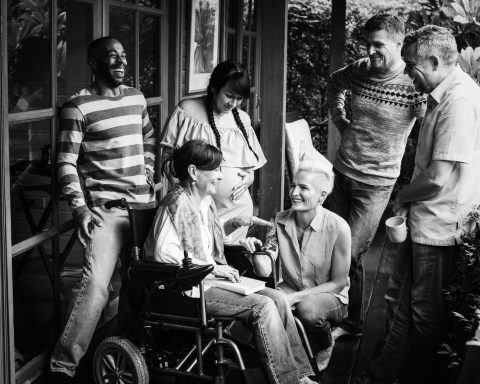Adapting to a new neighborhood can be overwhelming, as it involves adjusting to unfamiliar surroundings, building new connections, and integrating into a different community. However, the importance of successfully transitioning to a new neighborhood should be considered.
A smooth and successful transition brings many benefits, from a sense of belonging and improved social connections to enhanced overall well-being. Understanding the importance of embracing your new surroundings can pave the way for a fulfilling and enriching experience in your new neighborhood.
This article provides valuable insights into the importance of adapting to a new neighborhood. It also offers practical guidance for achieving a successful transition.
Settling in: navigating a new environment
In this segment, you will explore adapting to a new environment. This part begins with the task of unpacking and putting together your belongings. Later, it involves familiarizing yourself with the area and introducing yourself to neighbors.
Unpacking and organizing
Before your move, it is crucial to establish a plan for unpacking once you reach your new residence. This entails creating a list of your possessions and labeling boxes accordingly. Planning ahead is vital to ensure a smoother unpacking experience and minimize chaos.
Upon arrival, prioritize unpacking the essentials first. Once that is complete, proceed to assemble your furniture. Adding personal touches, such as hanging family photos, can help create a sense of familiarity in your new space. This approach will infuse enjoyment into the unpacking and organizing process.
Read more: Smart and Efficient Home Organization: Boost Productivity By Creating Zones
Getting to know the area
Once your home is in order, the next step is to acquaint yourself with the surrounding area. Having acquaintances in your new area can greatly contribute to a sense of closeness, but even with such connections, it takes time to discover local amenities and settle into a daily routine.
Allocating a year to 18 months for this significant life transition is a good approach. It is important to familiarize yourself with various facilitates, which may include:
- Public services and facilities, such as educational institutions.
- Private consumption options, such as restaurants and dining establishments.
- Transportation and communication services, including public transit options.
- Cultural institutions and attractions, like museums and art galleries.
By exploring and getting to know these aspects, you can better fit into your new surroundings and make smart choices about the resources and opportunities around you. You can use apps like Google Maps to find information about nearby places.
Meeting new neighbors
Neighbors can be the first people you turn to when you need help. Therefore, getting to know your neighbors is an important aspect to do when you move to a new neighborhood. You can start by introducing yourself in person, throwing a housewarming party, or joining a local club.
Building connections
After completing the previous stage, which involves meeting friendly new neighbors, you will learn how to establish relationships with them. This can be accomplished in two different ways. The first is by participating in community events and interacting with local businesses.
Read more: How to Start a Relationship: Steps and Dos and Don’ts
Involvement in community activities
Engaging in community activities can aid in familiarizing yourself with your environment. It also offers numerous advantages, such as preserving your well-being and autonomy, fostering closer connections with others, and increasing your awareness of local happenings. Here are a few suggestions for getting involved:
- Volunteer or join a community organization.
- Form a social circle with like-minded individuals.
- Initiate a project that contributes to the betterment of your community.
- Seek out local events and participate in them.
Engaging with local businesses
A local business refers to any company that offers products or services to the nearby community. Regardless of your marital status or stage of life, the social features provided by local businesses can greatly enhance your social life.
Having access to a business center can foster connections with your neighbors and lead to the formation of new friendships. Engaging in social activities has the potential to uplift your mood and overall well-being.
Utilizing social networks
This section will explore strategies for navigating social networks and establishing connections when moving to a new neighborhood. Embracing virtual and in-person interactions is key for newcomers to successfully navigate the social landscape, ensuring a smoother and more enjoyable transition.
Exploring social media platforms
Social media platforms like Facebook, Nextdoor, and Meetup offer valuable opportunities to connect with others and become acquainted with the local community. They enable individuals to join neighborhood groups, discover local events, and engage with fellow residents who share similar interests.
Connecting through local services and events
Connecting through local services and events is equally important in building a sense of belonging. Exploring nearby businesses, attending community gatherings, or participating in local volunteer opportunities can provide opportunities to meet neighbors, exchange information, and develop meaningful relationships
Overcoming challenges
Even though you have adapted to a new environment, there are times when you will experience challenges. The challenge is feeling homesick and embracing change. This section will discuss both of these points.
Dealing with homesickness and loneliness
Experiencing homesickness is a common occurrence after undergoing a significant transition. Responses to homesickness can manifest differently among individuals, ranging from feelings of depression and anxiety to physical discomfort.
However, forming new friendships and establishing connections with others can mitigate the emotions of isolation and loneliness.
Embracing change and flexibility
Adopting a mindset of embracing change and being flexible in a new neighborhood can present difficulties, but it also opens doors for personal growth and learning. Embracing adaptability and flexibility allows individuals to think critically, tackle challenges from different perspectives, and cultivate inventive solutions.
In conclusion
Adapting to a new neighborhood involves settling in, building connections, utilizing social networks, and overcoming challenges. By taking proactive steps and embracing the new community, you can create a sense of belonging and make the most of the transition. Embrace change, engage with neighbors, participate in local events, and seek support when needed to make your new neighborhood feel like home.
If you would like to see more resources on communities, check out the Household Management Science Labs. The lab uses the research of the Institute for Life Management Science Labs to produce courses, certifications, podcasts, videos, and other tools. Visit the Household Management Science Labs today.
Photo by Hussein Altameemi on Pexels



